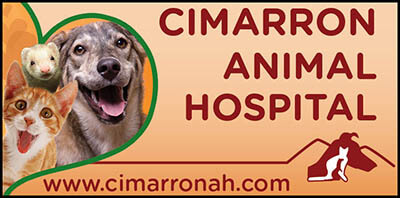I’ve heard Corn is bad for pets. Is this true?
Less expensive pet foods often contain a lot of corn, used largely as a carbohydrate source, because it is cheap.
Dry foods have more corn /grain than canned foods as these grain products are used to give the food it’s crunchy texture.
Corn is not a very natural food for dogs, who are omnivores, and certainly not for cats, who are carnivores.
Vets have recommended dry food over wet food for decades to improve pet’s dental health (because we don’t let our pets chew on bones because we don’t like having to perform emergency surgery to remove the bones from obstructing their intestines).
The result: more high carb foods have been fed to our pets over the decades.
There has been a huge rise in diabetes in dogs and cats, largely attributed to the high carbohydrate content of commercially available pet foods. So there came a great movement away from corn and grains, in general, being deemed the evil contributors to the rise in pet illness (diabetes,and obesity). Furthermore, as we learned more about food allergies in pets, as in people, we discovered pets develop allergies to their food ingredients: proteins from any source, whether meat, dairy, grain, fish, or soy. So, another strike against corn and grains.
I believe that we feed our dogs and, especially our cats, way too many carbohydrates in general. That is one of the reasons that I don’t recommend feeding less expensive grocery store foods. The less expensive it is, the more likely it is to be heavy on carbohydrates, light on protein. However, some carbohydrates are improtant for metabolism, brain function, athletic energy, etc. The “bad” thing is the amount of carbs. So, buy Premium over grocery-store brands that use corn and grain judiciously, as a highly digestible energy and protein source.
BUT Beware : A lot of the “grain-free” foods just replace the corn, wheat and barley with high glycemic value carbohydrates such as potatoes, sweet potatoes, tomatoes and carrots in their formulations! Food ingredients with high glycemic value, as any human diabetic knows, are quickly converted into sugar by the body. This is even worse than corn and other high fiber, low glycemic grains!
If you are looking for grain- free food, look for diets that get the necessary carbs into their foods with lower-glycemic sources such as peas and berries (even peas have a pretty high gycemic index, balanced only by their high protein content) which is at least better for protecting our pets against the diabetes epidemic.
Another reason humans choose to feed grain- free foods is because they believe that it is more “natural” for the pet. After all, how many pets would eat corn in the wild? Well, cats wouldn’t. But a dog would if it was in the intestines of its prey dinner (cats don’t usually eat the intestines of their prey). But then, they would also eat the other grains, seed, berries and grasses present, too. But, potatoes and sweet potatoes are not a usual food item for most prey animals, so these are certainly even less “natural”! (How many wild dogs and cats go rooting for potatoes?)
Here’s a List of “Red zone- High Glycemic Index foods” Are these in your pet’s food? Located toward the top of the list, indicating high volume in the overall mix?
The other big reason for the grain-free craze is our new understanding of food allergies in pets. Certainly, some pets can develop allergies to corn, wheat and other grains. But, many more pets develop allergies to beef, chicken, soy and dairy products than to vegetable sources! So, there is nothing magically hypoallergenic about grain-free or corn-free food, unless that happens to be the (unlikely) ingredient that your pet is allergic to! You can certainly try a grain free diet to see if your pet’s allergies improve. If they do improve, great! If not, you have not ruled out other food allergies.
Vet’s Perspective (my opinion):
If you want to see if your pet responds to a grain- free diet, go ahead and try it. Just realize that there is nothing sacred about the over-all nutritional value in grain free diets. I have seen many pets suffer from the number one nutritional disease– obesity– on grain-free diets as on any other food. (Because there is no control on the number of calories that go into pet diets, so many of these “nautral and grain-free” foods are unreasonably high in calories. So, don’t get taken in by the advertising or the teenager at the pet food store.
There is nothing “dirty” or “bad” about grains and corn in pet food diets as long as they are not used excessively!
“Myth of Fact” :Corn is a poorly digested “filler” that causes allergies
“Myth or Fact: Pet foods should be grain-free
An interesting perspective on grain -free foods…


